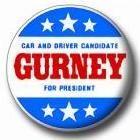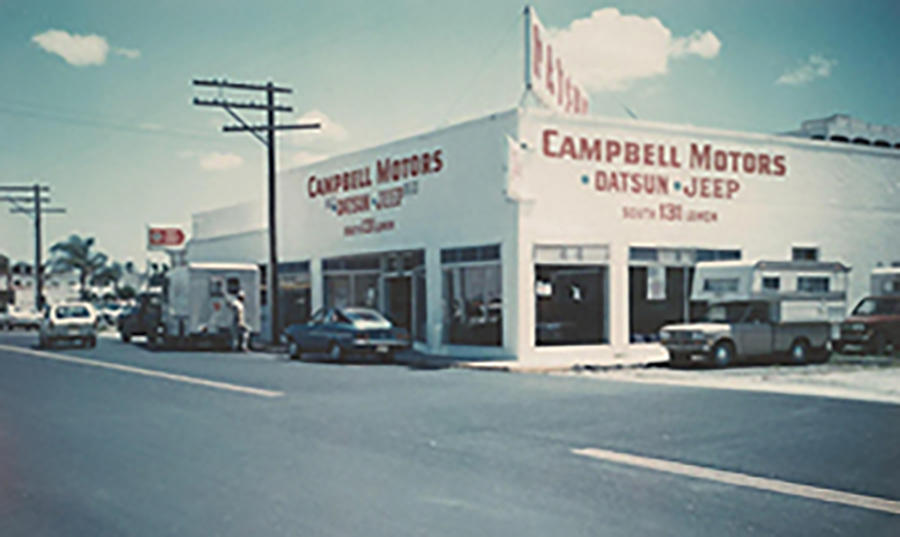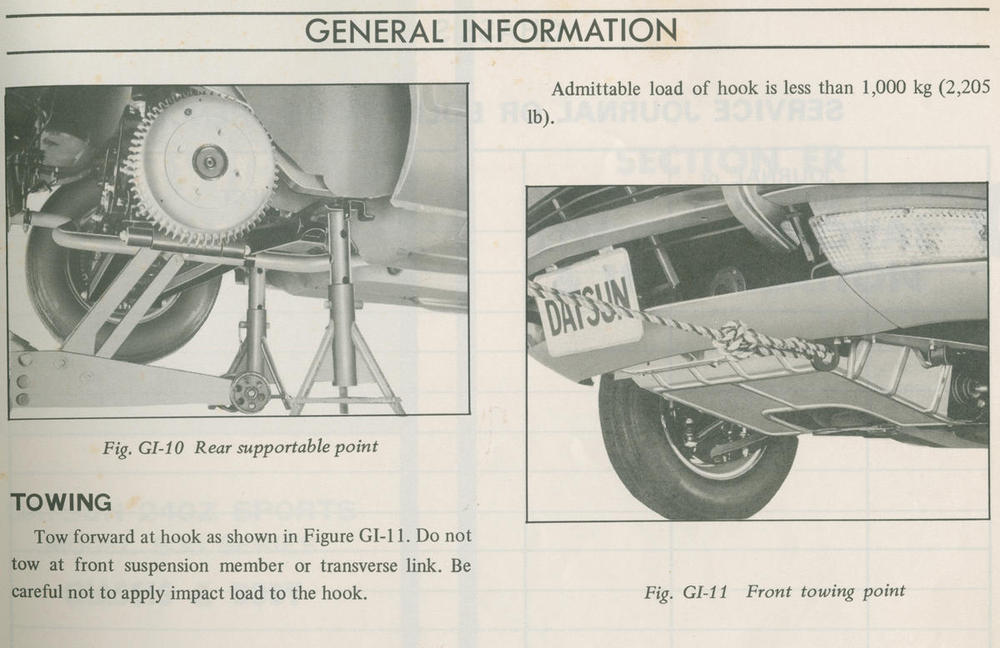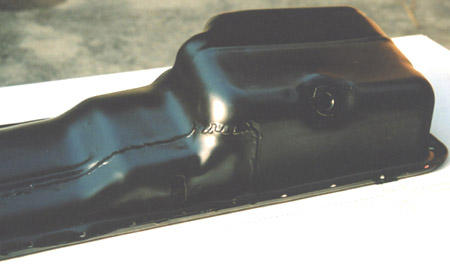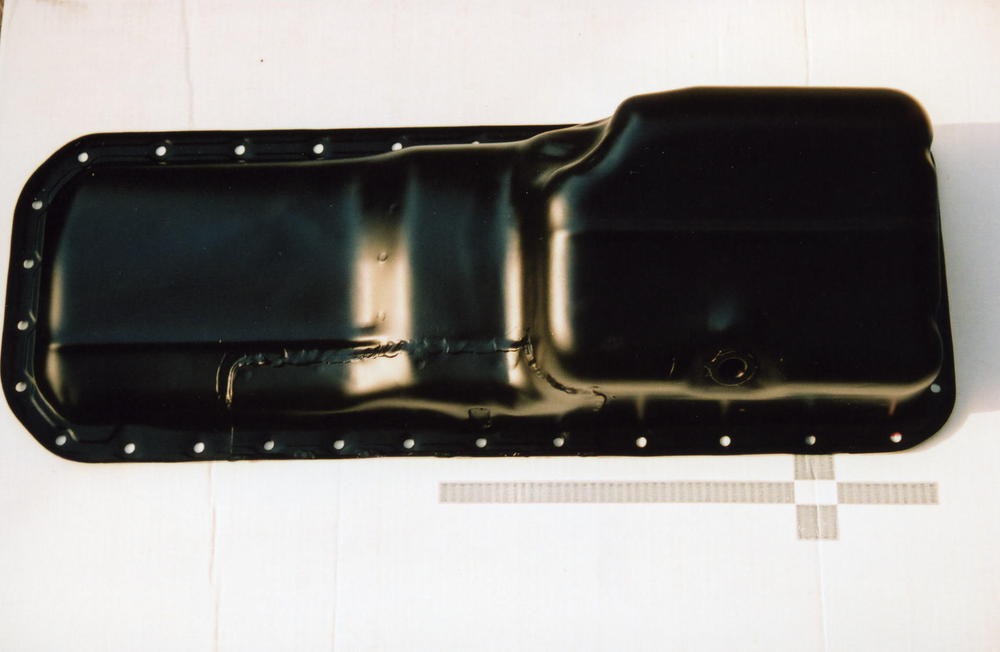Everything posted by 26th-Z
-
Finally Got My Garage Mahal!!!
Spill grease! Looks great! Congrats
-
Classic Motorsports Mag
I would like to weigh in by pointing out that Classic Motorsports magazine is primarily an entertainment periodical and not an historical document by any reasonable stretch of the imagination. The article, although written by an extremely credible source, is written and presented as a story, an opinion, commentary, and recollection. For instance, if BRE corresponded directly with Nissan engineering directly, of course Nissan would present the described, interpreted reaction. Alan's quote above is a perfect illustration. Peter Brock offers no indication of what Nissan or Mr. Katayama were "aware"; only his opinion or perception, recollection of those days so many years ago. For that matter, even his own engines were extensively modified; balanced, cc'd, ported, polished, only resembling what was delivered and sold to the public. Of course Peter saved the day. He's the greatest. Just ask him. A true disciple in the very image of his mentor, Carroll Shelby, who incidentally, snaked the Toyota 2000GT racing program away from Peter. The reader has to take all of this with a large dose of salt, as they say. Great entertainment, great story, probably mostly true, but not factually substantiated to qualify as gospel, let alone 'history'.
-
Found old Z pictures. I’ll start!
-
New (To Me lol) 240z and Advice Needed
There seems to be so much confusion about tow hooks! How can that be?! The loop eye bolted to the front frame rail is the specified tow hook per the owner's manual and service manuals. There is a load rating given for it. Towing the car from the front is the only concession made. There is no recommendation for pulling or towing the car from the rear. These hooks mounted to the rear bumper brackets are tie-down hooks meant for transportation purposes; keeping a car stationary on a flat surface. That's how the cars were secured during shipping. Sometimes they were removed by the dealer but I see them all the time. They have no structural load rating.
-
New (To Me lol) 240z and Advice Needed
- 1972 Z door handle reinstall
Roll the window up so that you have room to work on the handle.- New (To Me lol) 240z and Advice Needed
I'm betting 905 Monte Carlo Red. Its an early car and probably worth more in a stock configuration, but it's your car. Nice find! No, you don't really need to do anything more other than get it rolling before you ship it. Probably air up the tires.- country of origin of HLS30-00957
According to Carl's list, HLS30-00958 is in Connecticut; if that adds anything to this discussion. The model identification list that ZedHead posted is probably from a later chassis manual of some sort judging by the reference to SU carburetors. However, that list appears in the May 1970 Service Bulletin vol. 125 "Introduction of the Datsun 240Z Sports Model S30 Series". I can't scan the thing (and we have discussed this in the archives - possibly the HLS30-UN thread) so I'm going to make some explaining: Every LHD car imported into North America was an HLS30U. It doesn't say that on any stamped chassis ID, but that's what our North American cars are. They all came with L24 engines, F4W71A-4 gearboxes, and 3.364 final drives. The Basic HLS30Us had engine emission control devices but it was the HLS30UV that had the evaporative emission controls. For instance, my cars are HLS30Us without the evaporative tank but with smog pumps on the engine. Canada export cars, HLS30UN, did not get either emission setup, thus the E41 balance tube. However, both HLS30UVs and HLS30UNs went to Canada. In the State of Ontario, HLS30Us were HLS30UVs because they had emission control devices on the engine and evaporative emission control devices on the chassis. So! There's a good chance your car could be an Ontario import which probably doesn't help because it is the same HLS30UV that was sold on the West coast of USA.- To repair or buy new frame rails?
Yea, I agree. Why would you want to replace the good one, anyhow? If you can get away with a patch like that, do it. See what you have to work with when you cut it open. Is it under the battery tray? That's why it rusted out in that spot.- [SOLD] 1971 240Z Original Restoration, 918 Orange - BAT
I never want to be critical of someone else's car - critically negative. That's just not polite. So I want to point out some things on the BAT car that I am particularly fond of. I can't stop admiring the construction screws used to mount the fuel filter; mounted over on the side so you can see the custom holes drilled in the shock tower. The battery acid drip marks are to die for! What authentic patina! Like none I have ever seen before. The heater hose firewall grommets are gorgeous! I just can't say enough. Put a reserve on your car, motorman. A big reserve. If that thing can go for $44k.....- Datsun-240z Vs Fairlady-z432
Great transmission pictures, Kats! Thanks- BAT Series 1 over 40k after first day
- Power of Z article - GQ Style
That was what was pretty much going on at the time. Semi-professional, sponsored teams were placing entries in a racing series that was intended for amateur builders and drivers. Incidentally, Pete Brock has a new book out; "The Road to Modena".- Power of Z article - GQ Style
Unidentified pertinence: "As best I can tell from various sources...Richie Ginther, as an employee of VW-Pacific, was commissioned by VW (Jo Hoppen) to built six 914-6 cars for 1970, for dealers to go for the 1970 ARRC (Road Atlanta) C Production National Championships. Two of those were campaigned by VW-Pacific for Alan Johnson and Elliot Forbes Robinson. They only got 4th and 5th at the ARRC behind the Datsuns. VW lost interest in the program and the cars were raced in 1971 but not seriously." I concur with the statement above from personal knowledge. Bob Tullius of Group 44 fame campaigned a Triumph TR-6 in C-Production during the 1970 - 1971 SCCA "American Road Race of Champions" with similar results against the BRE Datsuns. Another thing to consider is that the racing we are referring to was considered "amateur racing" in the day. Porsche's success in the series you have cited, Alan, were considered "professional racing" by comparison.- Power of Z article - GQ Style
"The Stainless Steel Carrot"; Sylvia Wilkinson would be the best insight to the quote, Alan. Not so much a fact check but rather an insight to the man who said that.- Power of Z article - GQ Style
Technically speaking, the brakes on the S30 series are "vacuum assisted". There is no hydraulic pump power assist that is common today. But, yea, you could call them "power brakes". S30s never had power steering.- ZCON 2018 Roll Call
Yes you do. I have been celebrating my 50th birthday for the last ten years.- 1970 Series1 240z "barnfind"
And of course you know what today is. Top of the 49th to you Alan!- 1970 Series1 240z "barnfind"
It has more to do with the people who like to see things described properly. The title of the thread piqued my interest only to find out that the car isn't. I'm happy that you inherited a low mileage early car, and it's a very pretty car, but I would encourage you, jakay11, to learn a little more about your car and appreciate what you have. BTW, the interior is not leather.- 1970 Series1 240z "barnfind"
Interesting. Numbers seem to be quite jumbled. According to Carl's inventory, HLS30-14886 was built in November 1970, HLS30-15647 was built in October, and HLS30-15652 was built in December. I would imagine that the car was ordered six months before it was built. Furthermore, it would be a 1971 model year.- ZCON 2018 Roll Call
That never should have happened, motorman7. Sorry. I'm happy to hear everyone enjoyed talking with Matsuo san. I recommend; "DATSUN 240Z Engineering Development" by Hitoshi Uemura.- ZCON 2018 Roll Call
I'm sorry to hear that. Were you in the second round of judging for a gold medallion or something? I have posted these pictures a number of times...- ZCON 2018 Roll Call
Yep. That's why there is a patch on the side of the oil pan.- Datsun-240z Vs Fairlady-z432
Several thoughts here... Nissan (Datsun) was not aware of the overwhelming response that the newly introduced 240Z would have in North America. Looking at how popular the car became is hindsight; not the foresight present when the specification was determined for the North American export. What we got was the stripped down, basic S30 model. For instance, the 240Z originally came with rubber floor mats. Carpeting was originally added at the port of destination; manufactured by a North American company. 5-speeds were not very common in North America at the time. There seemed no need to 'jazz up' a car which was going to have questionable sales results in spite of Mr. Katayama's influence. Once the popularity of the 240Z took off, there was no custom ordering with an optional 5-speed. People stood in line for the 'opportunity' to purchase one. Whatever car was delivered to the dealership was what you got. If you didn't like the color, you lost you chance to purchase as there were several people in line waiting for anything. My 26thZ was initially ordered in white. It arrived green. It was the first and only car delivered to the dealership (Campbell Datsun in Sarasota, Florida) and the dealer wanted the car to sit in the showroom for some time as it was the only example they had.- Oil Pan Paint?
Bare Metal. Paint would be a contaminant. - 1972 Z door handle reinstall
Important Information
By using this site, you agree to our Privacy Policy and Guidelines. We have placed cookies on your device to help make this website better. You can adjust your cookie settings, otherwise we'll assume you're okay to continue.




